Want to whale watch? Try the Ecuadorian coast!
The shore that runs some 530 miles to define Ecuador’s Pacific coastline offers pristine beaches, vibrant surfing towns, traditional fishing villages, tepid seawater, exotic wildlife, archeological sites and a supremely bio-diverse abundance of flora and fauna. And every year, from May through September, this Ecuadorian region receives some very special visitors: humpback whales.
 Following a 5,000-mile journey, these gracious giants (Megaptera novaeangliae) arrive here from Antarctica in search of warmer waters in which to mate and reproduce.
Here, we look at these and other attractions that make a visit to this “route of the sun” more than worthwhile.
The annual “humpback festival”
The principal reason to whale watch on the Ecuadorian coast is, of course, the whales themselves. Thousands of travelers come annually to the small Ecuadorian fishing village of Puerto Lopez, attracted by the chance to witness the mating rituals of spectacular humpback whales. In this village, the “Humpback Festival” has taken place for almost 20 years – kicking off officially on June 21.
Following a 5,000-mile journey, these gracious giants (Megaptera novaeangliae) arrive here from Antarctica in search of warmer waters in which to mate and reproduce.
Here, we look at these and other attractions that make a visit to this “route of the sun” more than worthwhile.
The annual “humpback festival”
The principal reason to whale watch on the Ecuadorian coast is, of course, the whales themselves. Thousands of travelers come annually to the small Ecuadorian fishing village of Puerto Lopez, attracted by the chance to witness the mating rituals of spectacular humpback whales. In this village, the “Humpback Festival” has taken place for almost 20 years – kicking off officially on June 21.
 Even from the shoreline, whales can be observed as far away as 10 miles out to sea as they launch themselves from the ocean, expelling jets of water, and sometimes “singing.” These vocalizations, which can last up to an hour, are a part of the acrobatics and rituals used by males to attract females.
Female Humpback whales are larger than males, growing to a length of 16 meters (50+ feet); while males reach a length of between 11 and 12 meters (35 and 40 feet) and weigh up to 40 tons. “Humpback” whales bear this name because when they shoot out of the sea, their bodies arch to give the appearance of their being humpbacked.
Even from the shoreline, whales can be observed as far away as 10 miles out to sea as they launch themselves from the ocean, expelling jets of water, and sometimes “singing.” These vocalizations, which can last up to an hour, are a part of the acrobatics and rituals used by males to attract females.
Female Humpback whales are larger than males, growing to a length of 16 meters (50+ feet); while males reach a length of between 11 and 12 meters (35 and 40 feet) and weigh up to 40 tons. “Humpback” whales bear this name because when they shoot out of the sea, their bodies arch to give the appearance of their being humpbacked.
 Humpback whales breed mainly around the coast of the Isla de la Plata, which is part of Machalilla National Park, and also in Manabi Province. As the water in this area isn’t so deep, this makes it easier for the females to give birth and help their offspring develop. In addition, because the offspring (measuring about 5 meters long at birth) are born with only a very thin layer of fat, they need warm water – while the frigid waters of Antarctica would kill them.
In addition to the coast of Manabi Province, humpback whales can be observed — in smaller numbers, though — off the coasts of other coastal Ecuadorian provinces such as Guayas, Santa Elena, Esmeraldas and El Oro, and even in the Galapagos Islands.
Coastal cuisine
While the Ecuadorian coast is well known for its breaching whales, serene beaches, warm waters and a distinct littoral culture, its cuisine has yet to win the reputation of neighboring Peru. Nonetheless, a trip to this region will prove to you that this Ecuadorian fare clearly merits its own praise. Seafood takes the spotlight on Ecuador’s coast, as it’s not only delicious but also inexpensive and served up in humongous portions.
Humpback whales breed mainly around the coast of the Isla de la Plata, which is part of Machalilla National Park, and also in Manabi Province. As the water in this area isn’t so deep, this makes it easier for the females to give birth and help their offspring develop. In addition, because the offspring (measuring about 5 meters long at birth) are born with only a very thin layer of fat, they need warm water – while the frigid waters of Antarctica would kill them.
In addition to the coast of Manabi Province, humpback whales can be observed — in smaller numbers, though — off the coasts of other coastal Ecuadorian provinces such as Guayas, Santa Elena, Esmeraldas and El Oro, and even in the Galapagos Islands.
Coastal cuisine
While the Ecuadorian coast is well known for its breaching whales, serene beaches, warm waters and a distinct littoral culture, its cuisine has yet to win the reputation of neighboring Peru. Nonetheless, a trip to this region will prove to you that this Ecuadorian fare clearly merits its own praise. Seafood takes the spotlight on Ecuador’s coast, as it’s not only delicious but also inexpensive and served up in humongous portions.
 No matter how you prefer it — fried, grilled, breaded, roasted or bathed in delicious sauces — you’ll discover a new epicurean world with dishes like ceviche (which consists of savorous morsels of raw fish or shrimp, clams, crab or other seafood, and is marinated in lime juice and salt with onions and tomato). Then too, there are soups like sancocho, containing beef chest, yucca, corn, and banana; as well as other remarkable dishes like of lentil stew with fried patacones (cooked bananas, kneaded and fried). Hosts of other exotic delicacies incorporate fish, coconut, peanuts, lime and plantains. And let’s not forget to mention the area’s native fruits, such as guava, guayaba, ovos, cocoa, pineapple, lucuma and avocados.
First-class accommodations
Though the tourism infrastructure on the Ecuadorian coast is relatively limited, this is precisely why the area maintains many of its unspoiled qualities. While this coastal “Route of the Sun” is a setting where fishing boats are pulled through the waves every morning to unload the day’s catch, you can also find a few colorful Mediterranean-style eco-resorts here. These upscale facilities provide guests the chance to experience unique coastal habitats and exotic marine wildlife without sacrificing the creature comforts usually associated with big-city boutique hotels.
No matter how you prefer it — fried, grilled, breaded, roasted or bathed in delicious sauces — you’ll discover a new epicurean world with dishes like ceviche (which consists of savorous morsels of raw fish or shrimp, clams, crab or other seafood, and is marinated in lime juice and salt with onions and tomato). Then too, there are soups like sancocho, containing beef chest, yucca, corn, and banana; as well as other remarkable dishes like of lentil stew with fried patacones (cooked bananas, kneaded and fried). Hosts of other exotic delicacies incorporate fish, coconut, peanuts, lime and plantains. And let’s not forget to mention the area’s native fruits, such as guava, guayaba, ovos, cocoa, pineapple, lucuma and avocados.
First-class accommodations
Though the tourism infrastructure on the Ecuadorian coast is relatively limited, this is precisely why the area maintains many of its unspoiled qualities. While this coastal “Route of the Sun” is a setting where fishing boats are pulled through the waves every morning to unload the day’s catch, you can also find a few colorful Mediterranean-style eco-resorts here. These upscale facilities provide guests the chance to experience unique coastal habitats and exotic marine wildlife without sacrificing the creature comforts usually associated with big-city boutique hotels.
 By staying at the Mantaraya Lodge, for example, you can easily travel to Isla de la Plata, which is known as “the Poor man’s Galapagos Island” for being so easily accessible yet physically and biologically similar to the isles made famous by Charles Darwin. A trip to this island offers more than a chance to get close up to humpback whales, as it is the only place other than the Galapagos Islands where you can also find nesting Waved Albatrosses, Blue-footed boobies, Red-billed Tropicbirds, Frigatebirds and other Galapagos species.
By staying at the Mantaraya Lodge, for example, you can easily travel to Isla de la Plata, which is known as “the Poor man’s Galapagos Island” for being so easily accessible yet physically and biologically similar to the isles made famous by Charles Darwin. A trip to this island offers more than a chance to get close up to humpback whales, as it is the only place other than the Galapagos Islands where you can also find nesting Waved Albatrosses, Blue-footed boobies, Red-billed Tropicbirds, Frigatebirds and other Galapagos species.
 Friendly locals
Ecuador consists of four distinct regions: the Amazonian rainforest, the Pacific coast, the Andean highlands and the Galapagos archipelago. Consequently, regional differences exist that are reflected in attitudes, people’s dress, physical appearances, languages and family names – with the most pronounced regionalist differences displayed between people of the highland sierra (“serranos”) and the people from the coast (“costenos”). While all the peoples of Ecuador are known for being warm and polite, those of the Andean highlands tend to be more introverted, reserved and conservative, in comparison to people from the coast, who are characterized as having more uncomplicated and cheerful personalities.
For more informal Western travelers, at least, the smaller towns of the Ecuadorian coast especially may well offer a setting that is even more enjoyable, given the convivial and lively nature of the locals – despite obvious language differences. Whether haggling with vendors in a local market, interacting with local surfers on the beach or enjoying the nightlife at a local bar or smart waterfront restaurant, you’re sure to discover and enjoy the unmistakably friendly coastal personality.
Friendly locals
Ecuador consists of four distinct regions: the Amazonian rainforest, the Pacific coast, the Andean highlands and the Galapagos archipelago. Consequently, regional differences exist that are reflected in attitudes, people’s dress, physical appearances, languages and family names – with the most pronounced regionalist differences displayed between people of the highland sierra (“serranos”) and the people from the coast (“costenos”). While all the peoples of Ecuador are known for being warm and polite, those of the Andean highlands tend to be more introverted, reserved and conservative, in comparison to people from the coast, who are characterized as having more uncomplicated and cheerful personalities.
For more informal Western travelers, at least, the smaller towns of the Ecuadorian coast especially may well offer a setting that is even more enjoyable, given the convivial and lively nature of the locals – despite obvious language differences. Whether haggling with vendors in a local market, interacting with local surfers on the beach or enjoying the nightlife at a local bar or smart waterfront restaurant, you’re sure to discover and enjoy the unmistakably friendly coastal personality.
 In short, while most everyone is drawn by the spectacle of mammoth marine mammals rocketing from the sea, this and more offers itself here. Ecuador’s Pacific coast beckons.
Alfonso Tandazo is President and CEO at Surtrek Tour Operator.
If you would like to be a guest blogger on A Luxury Travel Blog in order to raise your profile, please contact us.
In short, while most everyone is drawn by the spectacle of mammoth marine mammals rocketing from the sea, this and more offers itself here. Ecuador’s Pacific coast beckons.
Alfonso Tandazo is President and CEO at Surtrek Tour Operator.
If you would like to be a guest blogger on A Luxury Travel Blog in order to raise your profile, please contact us.
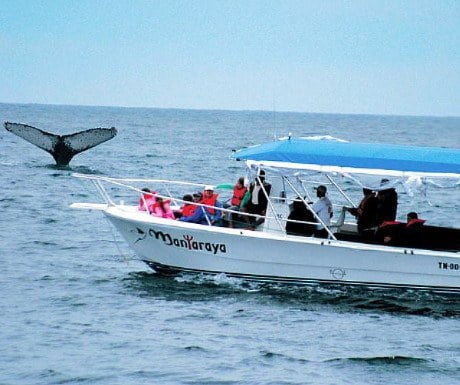 Following a 5,000-mile journey, these gracious giants (Megaptera novaeangliae) arrive here from Antarctica in search of warmer waters in which to mate and reproduce.
Here, we look at these and other attractions that make a visit to this “route of the sun” more than worthwhile.
The annual “humpback festival”
The principal reason to whale watch on the Ecuadorian coast is, of course, the whales themselves. Thousands of travelers come annually to the small Ecuadorian fishing village of Puerto Lopez, attracted by the chance to witness the mating rituals of spectacular humpback whales. In this village, the “Humpback Festival” has taken place for almost 20 years – kicking off officially on June 21.
Following a 5,000-mile journey, these gracious giants (Megaptera novaeangliae) arrive here from Antarctica in search of warmer waters in which to mate and reproduce.
Here, we look at these and other attractions that make a visit to this “route of the sun” more than worthwhile.
The annual “humpback festival”
The principal reason to whale watch on the Ecuadorian coast is, of course, the whales themselves. Thousands of travelers come annually to the small Ecuadorian fishing village of Puerto Lopez, attracted by the chance to witness the mating rituals of spectacular humpback whales. In this village, the “Humpback Festival” has taken place for almost 20 years – kicking off officially on June 21.
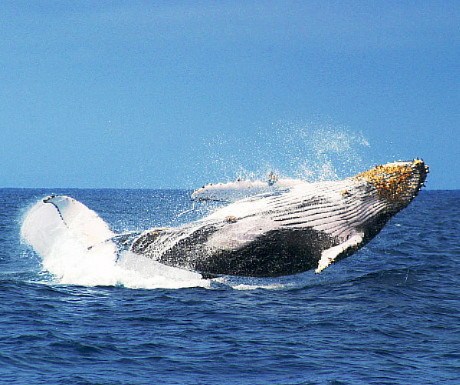 Even from the shoreline, whales can be observed as far away as 10 miles out to sea as they launch themselves from the ocean, expelling jets of water, and sometimes “singing.” These vocalizations, which can last up to an hour, are a part of the acrobatics and rituals used by males to attract females.
Female Humpback whales are larger than males, growing to a length of 16 meters (50+ feet); while males reach a length of between 11 and 12 meters (35 and 40 feet) and weigh up to 40 tons. “Humpback” whales bear this name because when they shoot out of the sea, their bodies arch to give the appearance of their being humpbacked.
Even from the shoreline, whales can be observed as far away as 10 miles out to sea as they launch themselves from the ocean, expelling jets of water, and sometimes “singing.” These vocalizations, which can last up to an hour, are a part of the acrobatics and rituals used by males to attract females.
Female Humpback whales are larger than males, growing to a length of 16 meters (50+ feet); while males reach a length of between 11 and 12 meters (35 and 40 feet) and weigh up to 40 tons. “Humpback” whales bear this name because when they shoot out of the sea, their bodies arch to give the appearance of their being humpbacked.
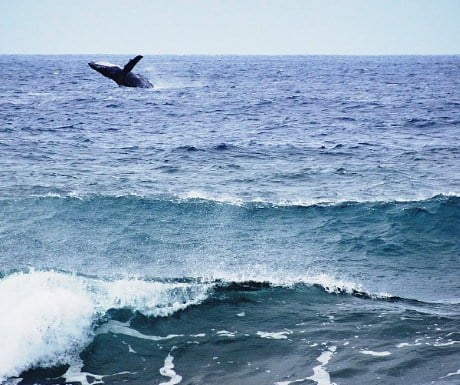 Humpback whales breed mainly around the coast of the Isla de la Plata, which is part of Machalilla National Park, and also in Manabi Province. As the water in this area isn’t so deep, this makes it easier for the females to give birth and help their offspring develop. In addition, because the offspring (measuring about 5 meters long at birth) are born with only a very thin layer of fat, they need warm water – while the frigid waters of Antarctica would kill them.
In addition to the coast of Manabi Province, humpback whales can be observed — in smaller numbers, though — off the coasts of other coastal Ecuadorian provinces such as Guayas, Santa Elena, Esmeraldas and El Oro, and even in the Galapagos Islands.
Coastal cuisine
While the Ecuadorian coast is well known for its breaching whales, serene beaches, warm waters and a distinct littoral culture, its cuisine has yet to win the reputation of neighboring Peru. Nonetheless, a trip to this region will prove to you that this Ecuadorian fare clearly merits its own praise. Seafood takes the spotlight on Ecuador’s coast, as it’s not only delicious but also inexpensive and served up in humongous portions.
Humpback whales breed mainly around the coast of the Isla de la Plata, which is part of Machalilla National Park, and also in Manabi Province. As the water in this area isn’t so deep, this makes it easier for the females to give birth and help their offspring develop. In addition, because the offspring (measuring about 5 meters long at birth) are born with only a very thin layer of fat, they need warm water – while the frigid waters of Antarctica would kill them.
In addition to the coast of Manabi Province, humpback whales can be observed — in smaller numbers, though — off the coasts of other coastal Ecuadorian provinces such as Guayas, Santa Elena, Esmeraldas and El Oro, and even in the Galapagos Islands.
Coastal cuisine
While the Ecuadorian coast is well known for its breaching whales, serene beaches, warm waters and a distinct littoral culture, its cuisine has yet to win the reputation of neighboring Peru. Nonetheless, a trip to this region will prove to you that this Ecuadorian fare clearly merits its own praise. Seafood takes the spotlight on Ecuador’s coast, as it’s not only delicious but also inexpensive and served up in humongous portions.
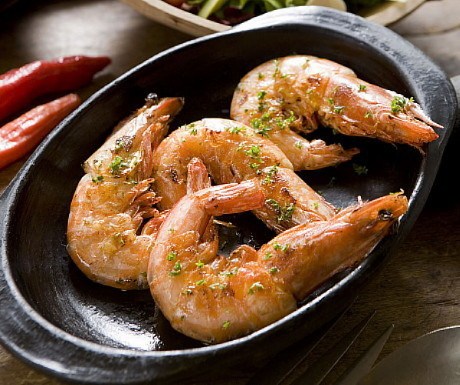 No matter how you prefer it — fried, grilled, breaded, roasted or bathed in delicious sauces — you’ll discover a new epicurean world with dishes like ceviche (which consists of savorous morsels of raw fish or shrimp, clams, crab or other seafood, and is marinated in lime juice and salt with onions and tomato). Then too, there are soups like sancocho, containing beef chest, yucca, corn, and banana; as well as other remarkable dishes like of lentil stew with fried patacones (cooked bananas, kneaded and fried). Hosts of other exotic delicacies incorporate fish, coconut, peanuts, lime and plantains. And let’s not forget to mention the area’s native fruits, such as guava, guayaba, ovos, cocoa, pineapple, lucuma and avocados.
First-class accommodations
Though the tourism infrastructure on the Ecuadorian coast is relatively limited, this is precisely why the area maintains many of its unspoiled qualities. While this coastal “Route of the Sun” is a setting where fishing boats are pulled through the waves every morning to unload the day’s catch, you can also find a few colorful Mediterranean-style eco-resorts here. These upscale facilities provide guests the chance to experience unique coastal habitats and exotic marine wildlife without sacrificing the creature comforts usually associated with big-city boutique hotels.
No matter how you prefer it — fried, grilled, breaded, roasted or bathed in delicious sauces — you’ll discover a new epicurean world with dishes like ceviche (which consists of savorous morsels of raw fish or shrimp, clams, crab or other seafood, and is marinated in lime juice and salt with onions and tomato). Then too, there are soups like sancocho, containing beef chest, yucca, corn, and banana; as well as other remarkable dishes like of lentil stew with fried patacones (cooked bananas, kneaded and fried). Hosts of other exotic delicacies incorporate fish, coconut, peanuts, lime and plantains. And let’s not forget to mention the area’s native fruits, such as guava, guayaba, ovos, cocoa, pineapple, lucuma and avocados.
First-class accommodations
Though the tourism infrastructure on the Ecuadorian coast is relatively limited, this is precisely why the area maintains many of its unspoiled qualities. While this coastal “Route of the Sun” is a setting where fishing boats are pulled through the waves every morning to unload the day’s catch, you can also find a few colorful Mediterranean-style eco-resorts here. These upscale facilities provide guests the chance to experience unique coastal habitats and exotic marine wildlife without sacrificing the creature comforts usually associated with big-city boutique hotels.
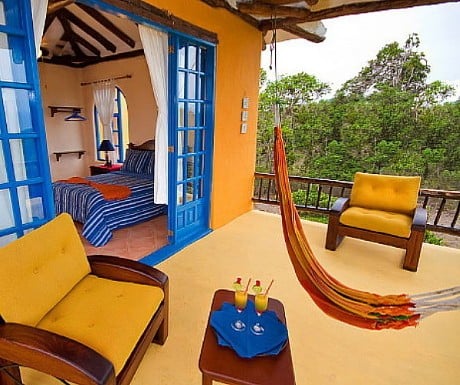 By staying at the Mantaraya Lodge, for example, you can easily travel to Isla de la Plata, which is known as “the Poor man’s Galapagos Island” for being so easily accessible yet physically and biologically similar to the isles made famous by Charles Darwin. A trip to this island offers more than a chance to get close up to humpback whales, as it is the only place other than the Galapagos Islands where you can also find nesting Waved Albatrosses, Blue-footed boobies, Red-billed Tropicbirds, Frigatebirds and other Galapagos species.
By staying at the Mantaraya Lodge, for example, you can easily travel to Isla de la Plata, which is known as “the Poor man’s Galapagos Island” for being so easily accessible yet physically and biologically similar to the isles made famous by Charles Darwin. A trip to this island offers more than a chance to get close up to humpback whales, as it is the only place other than the Galapagos Islands where you can also find nesting Waved Albatrosses, Blue-footed boobies, Red-billed Tropicbirds, Frigatebirds and other Galapagos species.
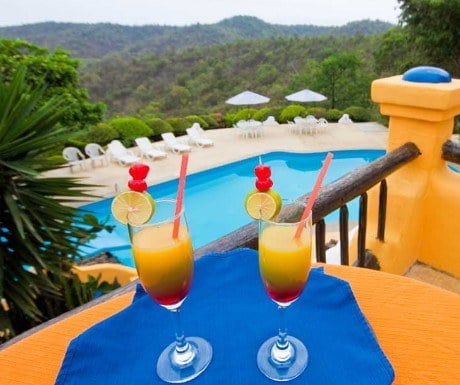 Friendly locals
Ecuador consists of four distinct regions: the Amazonian rainforest, the Pacific coast, the Andean highlands and the Galapagos archipelago. Consequently, regional differences exist that are reflected in attitudes, people’s dress, physical appearances, languages and family names – with the most pronounced regionalist differences displayed between people of the highland sierra (“serranos”) and the people from the coast (“costenos”). While all the peoples of Ecuador are known for being warm and polite, those of the Andean highlands tend to be more introverted, reserved and conservative, in comparison to people from the coast, who are characterized as having more uncomplicated and cheerful personalities.
For more informal Western travelers, at least, the smaller towns of the Ecuadorian coast especially may well offer a setting that is even more enjoyable, given the convivial and lively nature of the locals – despite obvious language differences. Whether haggling with vendors in a local market, interacting with local surfers on the beach or enjoying the nightlife at a local bar or smart waterfront restaurant, you’re sure to discover and enjoy the unmistakably friendly coastal personality.
Friendly locals
Ecuador consists of four distinct regions: the Amazonian rainforest, the Pacific coast, the Andean highlands and the Galapagos archipelago. Consequently, regional differences exist that are reflected in attitudes, people’s dress, physical appearances, languages and family names – with the most pronounced regionalist differences displayed between people of the highland sierra (“serranos”) and the people from the coast (“costenos”). While all the peoples of Ecuador are known for being warm and polite, those of the Andean highlands tend to be more introverted, reserved and conservative, in comparison to people from the coast, who are characterized as having more uncomplicated and cheerful personalities.
For more informal Western travelers, at least, the smaller towns of the Ecuadorian coast especially may well offer a setting that is even more enjoyable, given the convivial and lively nature of the locals – despite obvious language differences. Whether haggling with vendors in a local market, interacting with local surfers on the beach or enjoying the nightlife at a local bar or smart waterfront restaurant, you’re sure to discover and enjoy the unmistakably friendly coastal personality.
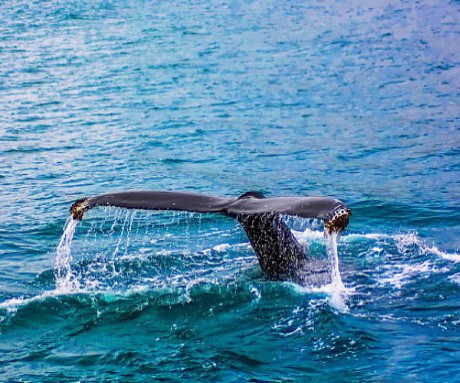 In short, while most everyone is drawn by the spectacle of mammoth marine mammals rocketing from the sea, this and more offers itself here. Ecuador’s Pacific coast beckons.
Alfonso Tandazo is President and CEO at Surtrek Tour Operator.
If you would like to be a guest blogger on A Luxury Travel Blog in order to raise your profile, please contact us.
In short, while most everyone is drawn by the spectacle of mammoth marine mammals rocketing from the sea, this and more offers itself here. Ecuador’s Pacific coast beckons.
Alfonso Tandazo is President and CEO at Surtrek Tour Operator.
If you would like to be a guest blogger on A Luxury Travel Blog in order to raise your profile, please contact us.Did you enjoy this article?
Receive similar content direct to your inbox.


